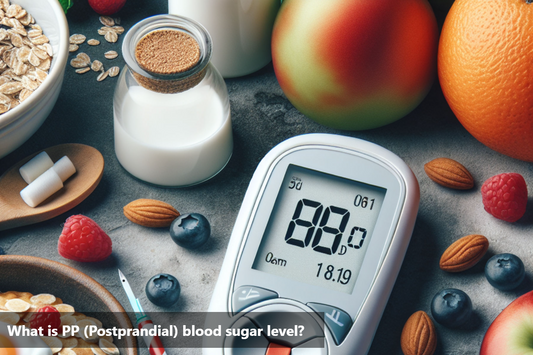Yoga has emerged as a beneficial practice for individuals managing diabetes, offering a holistic approach to improving overall health and well-being. The regular practice of yoga has been linked to improved blood sugar control, making it a valuable addition to diabetes management regimens. By incorporating specific yoga asanas tailored for diabetes, individuals can experience enhanced physical and mental health.
The calming and meditative aspects of yoga can help reduce stress levels, a common concern for those with diabetes. Additionally, certain yoga poses promote improved insulin sensitivity, which is crucial for individuals with Type 2 diabetes. The gentle stretches and controlled breathing techniques in yoga contribute to increased physical activity levels, a key component of diabetes management.
For diabetes patients looking to explore the benefits of yoga, poses such as Uttanasana (Standing Forward Bend), Vrikshasana (Tree Pose), and Ardha Matsyendrasana (Half Lord of the Fishes Pose) are particularly beneficial. These poses not only help in promoting flexibility and strength but also aid in blood circulation and relaxation.
Key Yoga Asanas for Diabetes Management
Uttanasana, (Standing Forward Bend) which helps in stimulating the pancreas and improving digestion. It offers a myriad of benefits in a single pose. As you fold forward, it stretches the entire back of the body, including the spine, hamstrings, and calves, promoting flexibility and releasing tension. Uttanasana also improves blood circulation, calms the mind, and reduces stress. Its gentle compression on the abdomen stimulates digestion and can alleviate digestive discomfort. This pose fosters a sense of relaxation and rejuvenation, making it a valuable addition to any yoga practice or as a standalone posture to center the body and mind.
Vrikshasana, (Tree Pose) is another pose that aids in improving balance and concentration, essential for diabetes management. s you stand on one leg and place the sole of the other foot against the inner thigh or calf, it strengthens the muscles of the standing leg and improves balance and coordination. Tree Pose also enhances concentration and focus, as maintaining stability requires mental presence and awareness. Additionally, it opens the hips and stretches the thighs, promoting flexibility in the lower body. By grounding through the standing foot and extending through the spine and arms, Vrksasana cultivates a sense of rootedness and stability, both physically and mentally, fostering inner calm and poise.
Ardha Matsyendrasana, ( Half Lord of the Fishes Pose), helps in massaging the abdominal organs and increasing the supply of oxygen to the body. As you twist the spine, it stretches the muscles along the back, shoulders, and hips, enhancing flexibility and relieving tension. This pose also stimulates the digestive organs, promoting healthy digestion and detoxification. Ardha Matsyendrasana improves spinal mobility and posture while toning the abdominal muscles. Additionally, the twist stimulates the flow of energy throughout the body, refreshing and invigorating the mind. By incorporating deep, mindful breathing, this pose encourages relaxation and mental clarity, making it a valuable addition to any yoga practice for overall well-being.
Dhanurasana (Bow Pose), is a dynamic yoga posture with a multitude of benefits. It stretches the abdomen, chest, shoulders, and thighs, enhancing flexibility and relieving tension. Additionally, it strengthens the back muscles, promotes better posture, and stimulates digestive organs, aiding in digestion and detoxification. Deep breathing in this pose improves respiratory function, while the backbend uplifts mood, alleviating stress and anxiety. Overall, Dhanurasana harmonizes physical and mental well-being, leaving you feeling rejuvenated and revitalized.
-
Bhujangasana (Cobra Pose), As you arch your back and lift your chest, it strengthens the spine and tones the muscles of the back, promoting better posture and alleviating back pain. Cobra Pose also opens the chest and lungs, improving respiratory function and increasing lung capacity. Additionally, it stimulates the abdominal organs, aiding digestion and promoting overall digestive health. Bhujangasana can also help relieve stress and fatigue while energizing the body and uplifting the mood, making it a valuable pose for both physical and mental well-being.
The Benefits of Yoga for Diabetes Type2
Yoga is a gentle yet powerful tool that can offer numerous benefits to individuals with Type 2 diabetes. One of the key advantages of incorporating yoga into your routine is the improvement in insulin sensitivity.
Regular practice of yoga helps the body utilize insulin more effectively, thereby assisting in better blood sugar management.
Engaging in yoga sessions can lead to a reduction in stress levels. Stress is known to negatively impact blood sugar levels in diabetes patients, and yoga serves as a natural stress-reliever. The calming nature of yoga practices can help in lowering stress hormones, promoting a sense of relaxation and overall well-being.
Notable benefit of yoga for individuals with Type 2 diabetes is the potential increase in physical activity. Yoga asanas can be tailored to different fitness levels and abilities, making it accessible to a wide range of individuals. Engaging in regular yoga practice can contribute to improved flexibility, strength, and balance, enhancing overall physical well-being.
Incorporating Yoga into Diabetes Management Regimen
1). When it comes to incorporating yoga into your diabetes management regimen, establishing a consistent practice is key. Aim to practice yoga for diabetes at least 3-5 times a week to experience its benefits effectively. Consistency is vital in reaping the rewards of improved blood sugar control and overall well-being.
2).Regarding the duration of yoga sessions, start with shorter sessions if you are new to yoga. Begin with 15-20 minute sessions and gradually increase the duration as your stamina and comfort levels improve. Listening to your body and not pushing yourself too hard is crucial, especially for individuals with diabetes.
3).For beginners or those with mobility issues, modifications to traditional yoga poses can make the practice more accessible. Utilize props like blocks or straps to assist in poses, and always choose gentle variations that cater to your body's needs. Remember, yoga is adaptable and can be tailored to suit various fitness levels and health conditions.
4). Yoga helps reduce stress levels, which can have a significant impact on blood sugar levels. Stress activates the body's "fight or flight" response, leading to the release of stress hormones like cortisol and adrenaline, which can cause blood sugar levels to rise
Step by Step Guide to the Asanas
Asana |
Step-by-Step Instructions |
|---|---|
Uttanasana (Standing Forward Bend) |
1Start in Tadasana (Mountain Pose). Inhale, lift your arms overhead. Exhale, fold forward from the hips, keeping your spine long. Bring your hands to the floor beside your feet or hold onto your ankles or calves. Hold the pose for 30 seconds to a minute. To release, inhale and slowly rise back up to standing. Return to Tadasana. |
Dhanurasana (Bow Pose) |
1Lie on your stomach with your arms by your sides. Bend your knees and reach back to grasp your ankles. Inhale, lift your chest and thighs off the mat, kicking your legs back into your hands. Hold the pose for 15-30 seconds, breathing deeply. Exhale, gently release and lower your chest and thighs back down. Rest in Child's Pose to counterbalance. |
Ardha Matsyendrasana (Half Lord of the Fishes Pose) |
Sit on the floor with your legs extended. Bend your right knee and place your right foot outside your left thigh. Inhale, lengthen your spine. Exhale, twist to the right, placing your left elbow on the outside of your right knee. Hold the pose, twisting from the base of your spine. Inhale, lengthen the spine, and exhale to deepen the twist. Release and repeat on the other side. |
Bhujangasana (Cobra Pose) |
Lie on your stomach with your palms under your shoulders. Press the tops of your feet and thighs into the floor. Inhale, lift your chest off the mat, keeping your elbows close to your body. Roll your shoulders back and down, opening your chest. Hold the pose for a few breaths, lengthening through the spine. Exhale, slowly lower back down to the mat. Rest in Makarasana (Crocodile Pose) to release tension. |
Vrikshasana (Tree Pose) |
Start in Tadasana (Mountain Pose). Shift your weight onto your left foot and lift your right foot off the ground. Place the sole of your right foot on the inner left thigh or calf, avoiding the knee. Find your balance and bring your palms together at your heart center or extend your arms overhead. Focus your gaze on a fixed point to help maintain balance. Hold the pose for 30 seconds to a minute, breathing deeply. Release and repeat on the other side. |
A Perspectve on Yoga Asanas for Diabetes Management
The key takeaway is the profound impact of yoga on blood sugar control, insulin sensitivity, stress reduction, and increased physical activity levels, especially for individuals with Type 2 diabetes. By regularly practicing specific yoga poses like Uttanasana, Vrikshasana, and Ardha Matsyendrasana, individuals can experience enhanced flexibility, strength, and relaxation, which are essential in managing diabetes.
This Blog post is an initiative by DiabeSmart, to provide accurate and Nutritionist / Doctor approved information related to Diabetes. DiabeSmart is India's first Food brand designed specifically for Diabetics, that has been clinically tested on Diabetics and Pre-Diabetics to deliver 55% - 70% lower Sugar spikes. DiabeSmart is part of Lo! Foods - India's leading brand for Everyday Functional Health foods.











